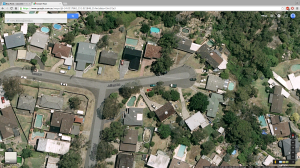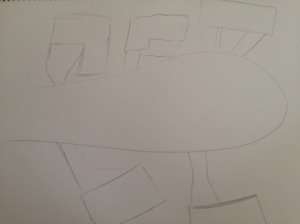Mapping experiment 5 – my final map
For my fifth and final mapping experiment, I will be mapping the journey my dog takes through the bushland surrounding my house. To do this, I will be using my iPhone (with GPS fitness running applications), attached to my dog’s harness. The app will track his every movement as we walk through the fire trails.
A GPS is a Global Positioning System which is a space-based satellite navigation setup that provides location and time information in all types of weather, anywhere on or near the earth where there is an unobstructed line of sight to four or more GPS satellite’s.

I was able to strap my iPhone which was in a waterproof case, to my dog’s harness using masking tape. The GPS application called Map My Run was used for this experiment. After using this app, i found it was not a satellite view, only street directory map which didn’t show the real images of our surroundings. The next day, i went back over the experiment using a different app called SportsTracker which accurately displayed the environment around us with a red line marking out exactly where my dog has ventured (8.4km).
To create a digital A1 size map using Photoshop, I had to create a custom page with the dimensions 594mm X 841mm
Next I made separate layers, and in each layer I used the brush tool in varying shades of green, brown, blue etc. – the main colours of the bushland. I also used different shaped brush tools to try and get a nice background to build on.
Above is the .pdf link to my final map – a visual representation of GPS tracking software showing the spontaneous journey my dog went on in the bush. I used a leaf pattern to represent his path; and it is interesting to see just how much more running my dog did than I. If I were to track the path I went on in the same area, there would be a lot more straight lines and less zig-zagging around. The points where his path abruptly changes direction is an indicator of when he sensed new information, such as birds, insects, and other people/dogs we came across.
If I had more time to practice with photoshop, I would have liked to map elevation, and distance/time. This would have looked interesting as a 3D map to show the high and low points of the bush, as the area we journeyed through is situated in a valley.
I believe this map would give new insights to someone who isn’t familiar with the sporadic nature of a dog exploring the wild, however, I did not learn anything new from this map as I am quite used to taking him for walks there.























